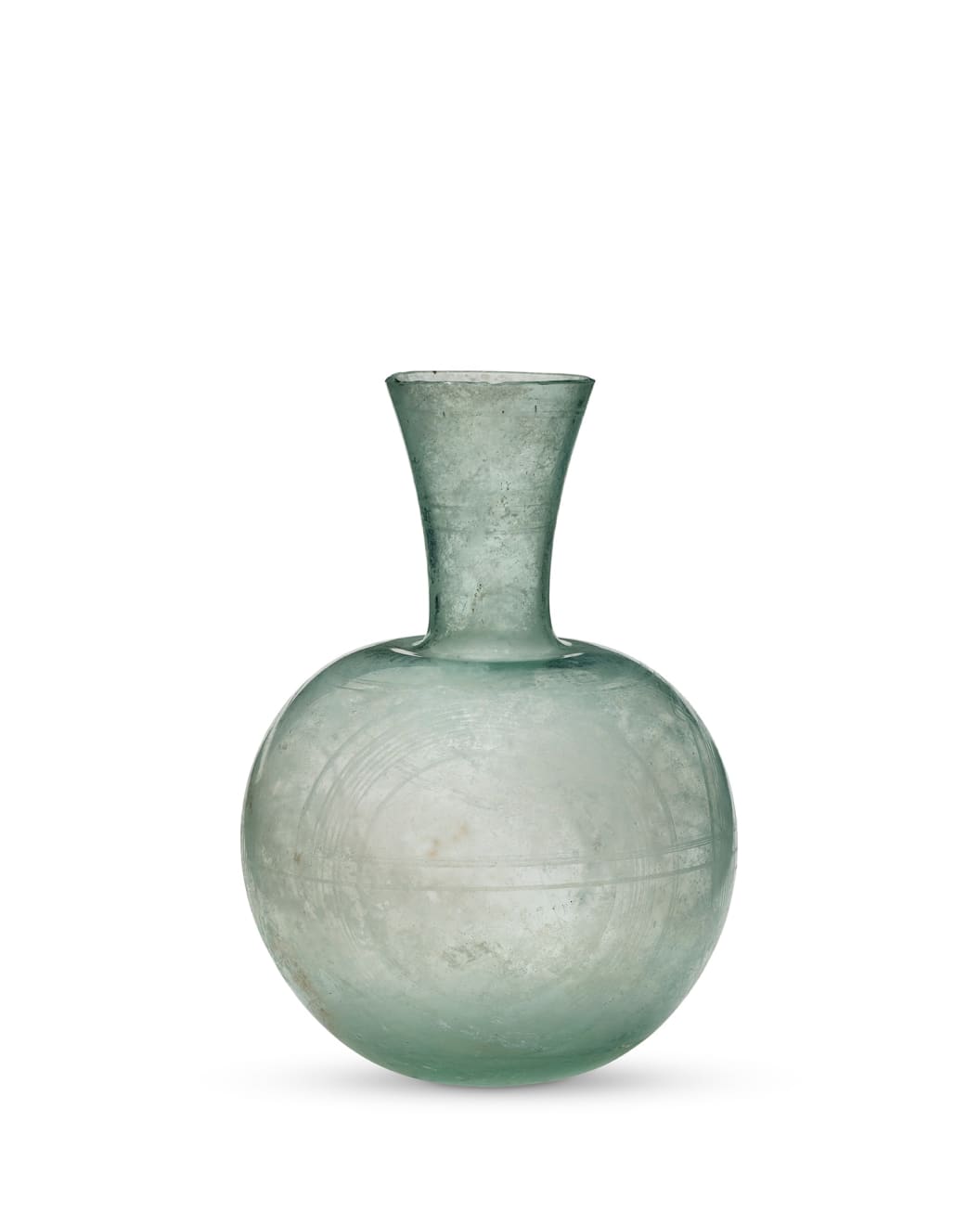Roman
A Roman pale green glass engraved flask, circa 3rd - 4th century AD
Glass
Height: 14 cm
The blown spherical body with two engraved lines around the the neck and middle, and three large circles formed from concentric circles, with a funnel mouth and cut-off rim. Condition...
The blown spherical body with two engraved lines around the the neck and middle, and three large circles formed from concentric circles, with a funnel mouth and cut-off rim.
Condition
Intact with minor wear, scratching and encrustation. Tiny chips in the rim. A milky iridescence in places.
Condition
Intact with minor wear, scratching and encrustation. Tiny chips in the rim. A milky iridescence in places.
Provenance
Hans Benzian Collection, SwitzerlandSotheby's, New York, The Benzian Collection of Ancient and Islamic Glass, 7 July 1994, lot 103
C.A. Hessing Collection, no. 60
Bonhams, London, 22 September 1998, lot 224
Nico F. Bijnsdorp Collection, the Netherlands
Exhibitions
Kunstmuseum Luzern, Dreitausend Jahre Glaskunst, 19 July - 13 September 1981.Museum Dordts Patriciërshuis, Dordrecht, NL, Glas Door de Eeuwen Heen, 11 April - 11 November 2018.
Literature
Wheel engraving was one of the techniques employed by glassmakers to decorate ancient glass. Linear and concentric lines were achieved using the sharp edge of such materials such as flint, obsidian, or even glass itself while the vessel is turned on a wheel.Similar vessels to this example have been found in eastern parts of the Roman empire. The flaring rim of this flask is typical of eastern examples. For a similar flask see, The Metropolitan Museum of Art, New York, acc. no. 91.1.1329.
Publications
M. Kunz, ed., 3000 Jahre Glaskunst: von der Antike bis zum Jugendstil, Kunstmuseum Luzern, 1981, no. 347.Zilverberg Spring 1999, no. 106.
